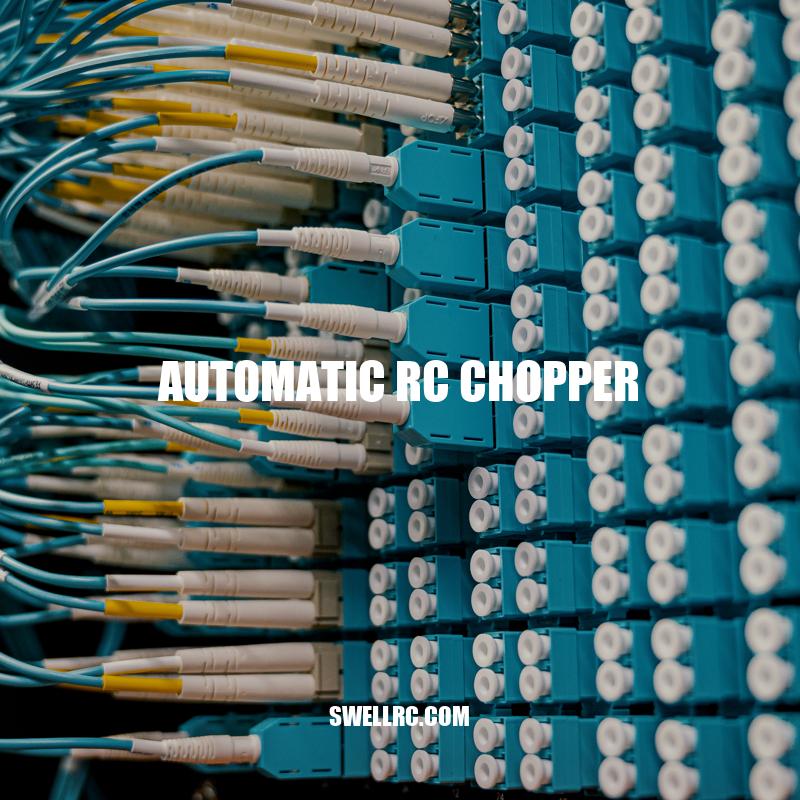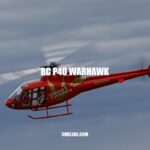Exploring the World of Automatic RC Choppers – A Comprehensive Guide
The world of remote-controlled helicopters has rapidly evolved over the years, and the introduction of automatic RC choppers, popularly known as drones, has revolutionized the game. Drones have gained immense popularity in various fields, from aerial photography to military intelligence. They have an array of features such as onboard cameras that can be maneuvered remotely, multiple rotor blades for stability, and easy-to-use controllers. Their versatility makes them an attractive option for enthusiasts and professionals alike. Despite their many advantages, drones come with their share of challenges and risks. Regulations are in place to ensure public safety and privacy, but the spread of drones has brought new concerns about their usage. While many of these risks can be mitigated by creating awareness, purchasing high-end models, and following the rules and guidelines set up for drone operators, drones remain a cause for concern in certain situations. Nonetheless, their usefulness cannot be undermined, and drones will continue to grow in popularity as technology progresses. In this article, we will delve into the functionalities of drones, their applications, the advantages of owning one, challenges and risks associated with drones, and the future of this technology.
Functionalities of Automatic RC Choppers
Automatic RC Choppers offer several functionalities that make them exceptional equipment for enthusiasts and professionals. Here are some of the features of automatic RC choppers:
- On board camera: Most automatic RC choppers come equipped with cameras that enable users to capture stunning aerial footage and imagery. The cameras can film movies and take photographs with high resolution and quality.
- Multiple rotor blades: The multiple rotors, usually four or six, ensure stability in the air and help automatic RC choppers achieve quick horizontal movements, hover vertically, and even perform flips and turns.
- GPS: Many automatic RC choppers come with a GPS system that helps the chopper maintain its position in the air and prevent it from flying out of range.
- Integration with smartphones: Some automatic RC choppers allow integration with smartphones or other mobile devices, enabling features such as real-time video streaming and control via a mobile application.
- Obstacle avoidance: High-end automatic RC choppers come equipped with sensors and object recognition technology to avoid obstacles such as trees or buildings during flight.
In addition to the features mentioned above, automatic RC choppers can hover, take off, and land automatically, have a range of up to several kilometers, and fly at different altitudes. There are many great brands of automatic RC choppers on the market such as the DJI Phantom series and Parrot Anafi. Several websites offer detailed information on the different types of automatic RC choppers and specifications of each model.
What is the functionality of a drone?
A drone is an unmanned aerial vehicle (UAV) that is equipped with various sensors, cameras, and other instruments to carry out tasks that were previously difficult or impossible to perform manually. The functionality of a drone typically includes:
- Recognizing and tracking objects or people from a distance, such as in search and rescue operations
- Surveying and mapping terrain, buildings, or infrastructure for construction or maintenance purposes
- Inspecting power lines, wind turbines, pipelines, and other hard-to-reach areas for damage or faults
- Collecting data on environmental conditions, such as air quality, water levels, or wildlife populations
Depending on the type and model, drones may also have additional features, such as obstacle avoidance, autonomous flight, or remote control via mobile devices or dedicated software. Some websites or products that offer drones for sale or rent with various functionalities are DJI, Parrot, 3D Robotics, and Yuneec.
Automatic RC Chopper
Automatic RC chopper, also known as autonomous helicopters, are a type of drone that can fly without manual control. These types of drones are equipped with various sensors and advanced technologies that allow them to fly, land, and avoid obstacles on their own.
The development of automatic RC choppers has opened up a world of possibilities in different industries. They are commonly used in military and defense operations, where they can execute dangerous missions without risking human lives. They are also used in agriculture for surveillance and crop monitoring, in search and rescue missions for locating missing persons, and in infrastructure inspection to detect faults and prevent accidents.
One popular example of an automatic RC chopper is the DJI Phantom 4, which is equipped with advanced computer vision and image processing technologies. This drone can detect obstacles in its path and automatically avoid them, making it suitable for challenging environments and tight spaces.
Another example of an automatic RC chopper is the DJI M400, which is designed for industrial applications such as infrastructure inspection and surveying. It is equipped with a high-resolution camera and thermal imaging sensors that can detect temperature differences and identify potential faults.
Overall, automatic RC choppers have numerous applications in different industries, and their development has opened up a new era in unmanned aerial systems. As technology advances and more industries begin to adopt them, it is likely that we will see even more innovative uses for these drones in the future.
What applications can a drone be used for?
Drones, also known as unmanned aerial vehicles, have a wide range of applications. Here are some common uses for drones:
- Aerial photography and videography: Drones can capture stunning photos and videos from high altitudes, which is particularly useful for real estate, construction, and outdoor events.
- Delivery services: Drones are being tested for delivering packages and goods in urban areas, as they can easily bypass traffic and reduce delivery times. Amazon’s Prime Air and UPS’s Flight Forward are working on developing drone delivery services.
- Search and rescue operations: Drones equipped with thermal imaging cameras and other sensors can aid in locating missing people, detecting fires, and mapping disaster areas.
- Agriculture: Farmers use drones to survey crops and fields, monitor soil conditions, and monitor livestock.
- Infrastructure inspection: Drones can inspect bridges, power lines, and oil rigs, which reduces the need for workers to climb dangerous heights.
There are many websites and companies that offer drones for professional use, such as DJI, Parrot, and Yuneec. These companies offer a range of drones and accessories specifically designed for different applications.
Conclusion
In conclusion, drones present significant possibilities for several industries, from cinematography to energy and utilities. With their versatility and increased capabilities, drone technology can go beyond the current applications and change the way we approach various aspects of life, potentially solving some of the world’s most significant challenges.
As drone technology continues to evolve, we can expect to see even more advanced capabilities, including artificial intelligence, automation, and improved battery life. One crucial aspect of drone use is upholding safety, privacy, and regulatory requirements while using the equipment. As such, it is crucial to adhere to the regulations set by the Federal Aviation Authority and the relevant authorities to mitigate any risks or infringement.
Overall, the future of drones is promising, and their practical uses are limitless. Through responsible use and the continued advancement of technology, we can positively impact various industries and make our lives more comfortable and safer.



